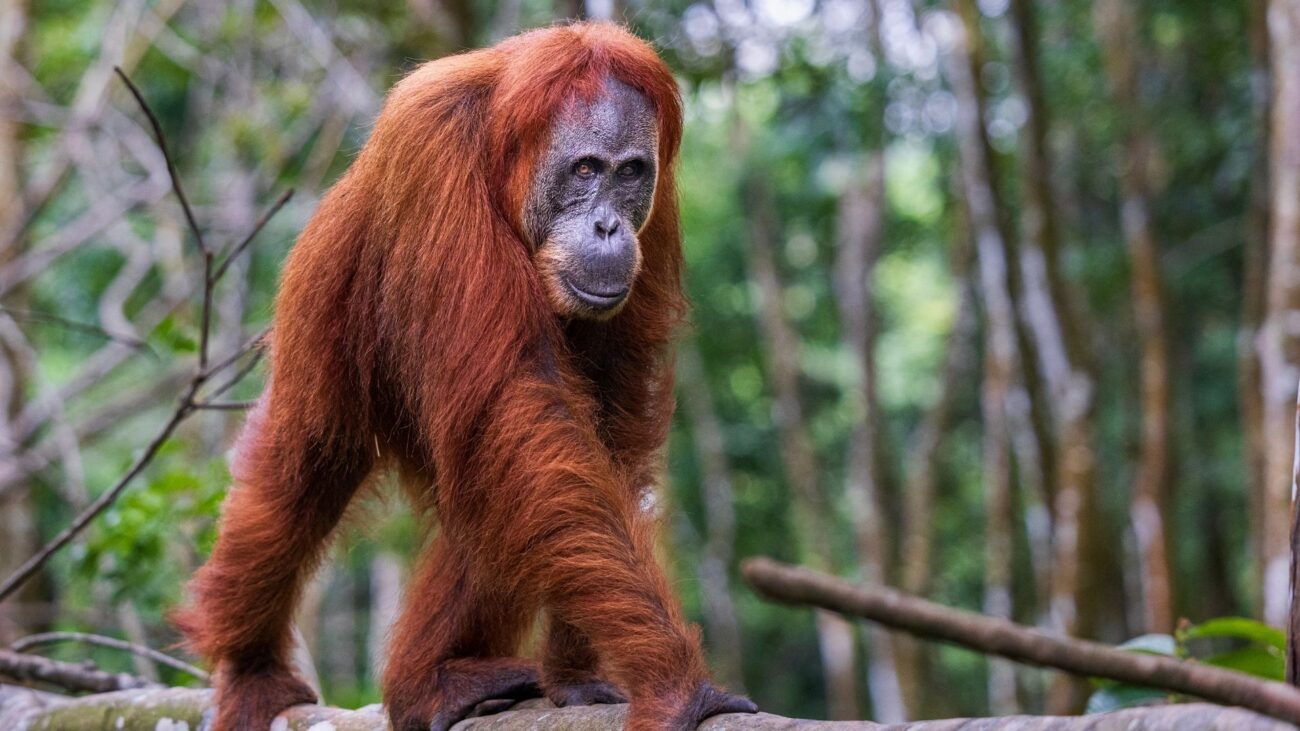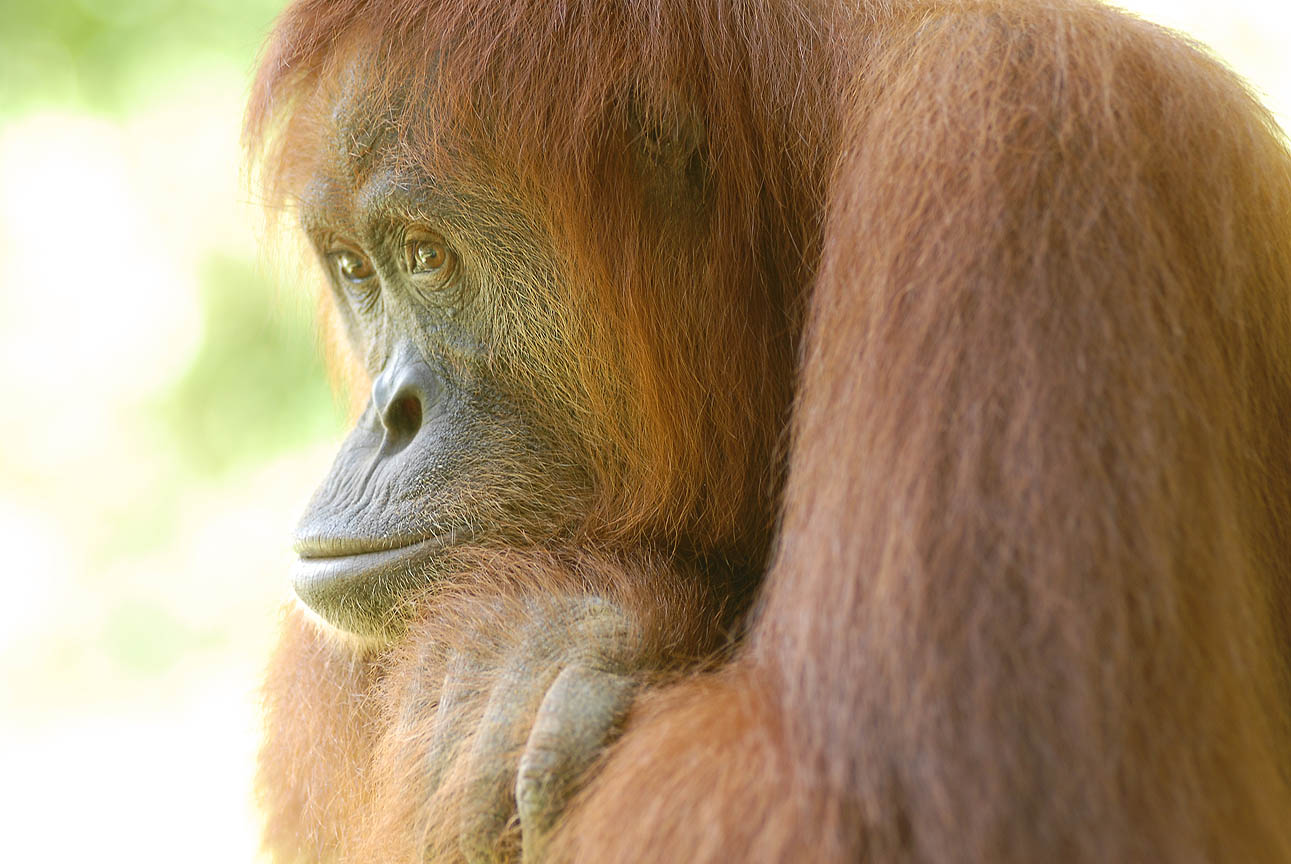
Orangutans show remarkable ingenuity in movement. From breaking branches to “hook” and swing across gaps in the canopy, to biting vines that restrict the sway of trees. Mothers form a “living bridge” for their babies, and adults have been seen constructing bridges over bodies of water. Youngsters bite and bend branches until they snap, then ride the crashing branch down through the canopy!
Orangutans modify sticks to extract seeds from hard-shelled fruits, probe holes and access insects. The exact method varies across groups, indicating cultural transmission and flexible problem-solving. They fashion a “cherry picker” seat out of a bent branch and then pull on nearby vegetation to raise or lower themselves, in order to access fruit.
Orangutans fashion a protective “glove” out of leaves to protect their hands and feet while foraging spiny fruits. They also use leaves as a seat cushion in spiky trees, and line their night nests with a comfy “mattress” with pillows and blankets! Orangutans also hold leafy branches over themselves to act like an umbrella in the rain, and make simple tools to scratch themselves.
Orangutans can strip leaves off a twig and hold them to their mouth to lower the frequency of their “kiss-squeak” call. This is to make themselves sound larger, especially in distress situations.
Orangutans’ complex tool use is a learned behaviour that varies across populations and regions. This cultural transmission is passed from mother to infant, and is one reason why young orangutans stay with their mothers for so long.
References: Hardus et al., 2009; Fox & Bin’Muhammad, 2002; . Russon et al., 2009; Russon et al., 2015. van Schaik et al., 1996; van Schaik et al., 2003; Rijksen, 1978; Schuppli et al., 2016; Galdikas, 1982; Meulman & van Schaik, 2013
You can help protect Sumatra's Orangutans. Click to get updates
